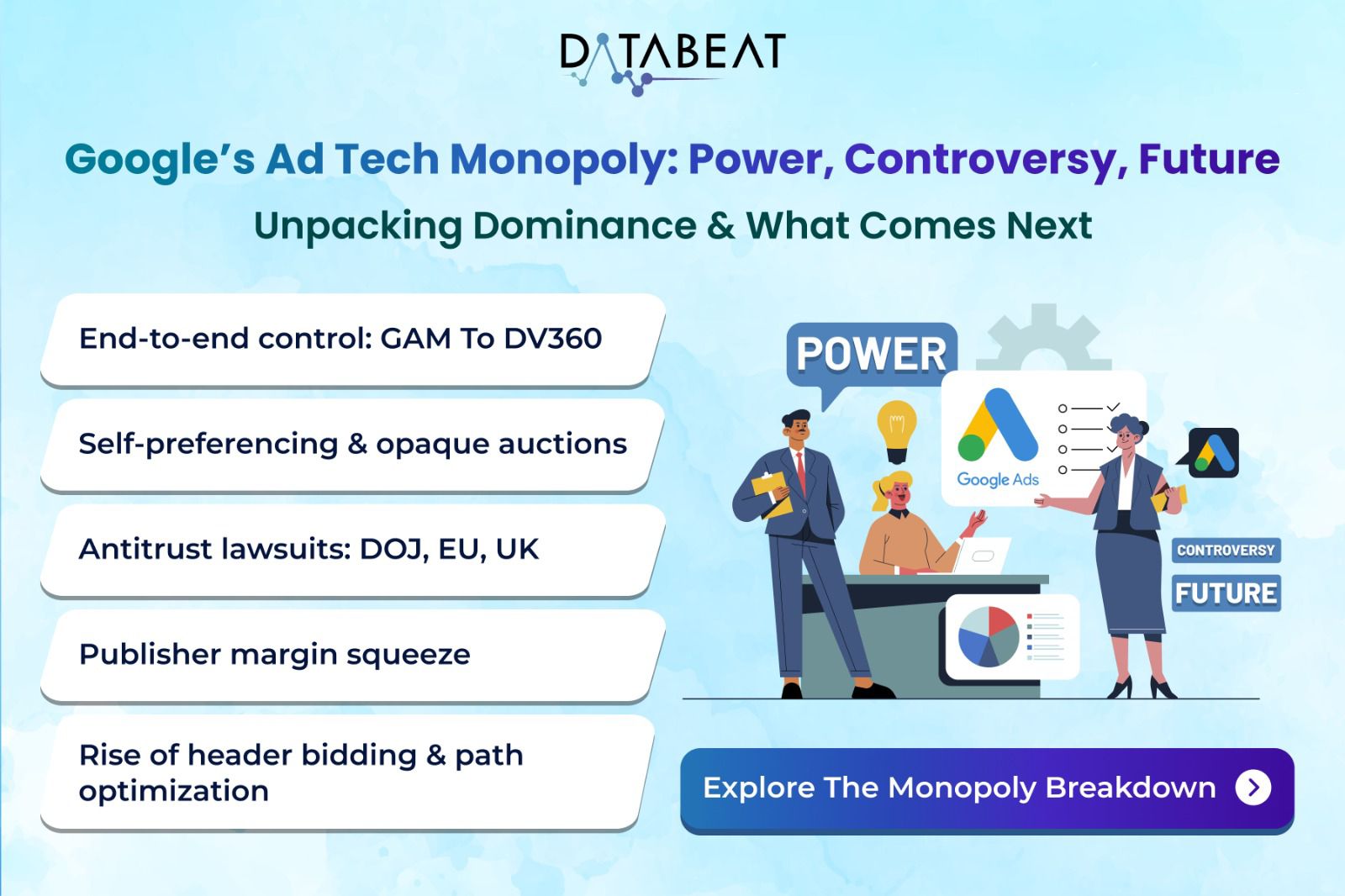
In the vast expanse of online advertising, few players have as much influence as Google. What was once a search engine giant has evolved into a monolith at the heart of the international ad tech universe. Now, its dominance of the digital ad supply chain has raised widespread alarm among regulators, publishers, and advertisers alike, prompting antitrust lawsuits and demands for structural reform.
The Make-up of Google’s AdTech Empire
Google’s reign is not limited to one segment of the ad tech stack — it controls all the major links in the chain of digital ads. Here’s how:
- Ad Server (Sell-Side): Google Ad Manager (GAM), the leading ad server that publishers use to deliver and serve ads.
- Supply-Side Platform (SSP): Google AdX links publishers to demand, determining which ads are served.
- Demand-Side Platform (DSP): Google DV360 enables advertisers to bid on exchange inventory.
- Ad Exchange: Google runs one of the largest programmatic exchanges, bringing buyers and sellers together.
- Publisher & Inventory Control: Via assets such as YouTube and Search, Google commands enormous quantities of high-quality ad inventory.
By virtue of this vertical integration, Google can control price, data flow, and auction dynamics — frequently in manners that competitors and even customers do not comprehend fully.
Allegations of Unfair Play
Google’s configuration is accused by critics of being able to prefer its services over others. The main allegations are:
- Self-preferencing in auctions: Google’s AdX is accused of having access to bids prior to others so that it can win more impressions.
- Opaque auction mechanics: Publishers and advertisers say they do not have clarity on how prices are determined and who gets the bids.
- Data supremacy: Google dominates an unprecedented quantity of user and performance data through its offerings (Chrome, Android, YouTube, Search, etc.), which confers on it a huge advantage in targeting.
Such tactics, critics contend, stifle competition, kill innovation, and drive up ad prices while shrinking publishers’ share of revenue.
Impact on the Industry
Google’s control has a number of stakeholders:
- Publishers are subjected to lower margins, diminished transparency, and reliance upon Google’s products.
- Advertisers could find themselves paying increased fees without realizing where their cash goes.
- Competitors lose market share as a result of Google’s vested ecosystem and first-party data position.
Most in the industry also fear that Google’s dominance hinders innovation because smaller competitors can’t match Google’s scale, integration, or access to data.
Google’s Defense: Scale, Efficiency, and Innovation
Adherents believe that Google’s scale has also conferred huge advantages on the digital advertising business. By providing an end-to-end system, Google has decreased friction between sellers and buyers, enhanced ad targeting, and enabled many businesses, particularly small businesses, to connect with global audiences efficiently. Its ongoing investments in privacy-safe technologies, fraud protection, and machine learning-based optimization are viewed as innovations that reward advertisers and users alike. Many publishers also admit that Google’s products are more robust, integrated, and efficient compared to many competing solutions available today.
The Road Ahead: Regulation or Reinvention?
The resolution of current lawsuits may redefine the digital ad world. If regulators can dismantle some of Google’s ad tech operations, it might result in:
- Neutral auction platforms with clear pricing.
- A resurgence of standalone ad tech companies.
- More data parity and accountability.
Others, meanwhile, are turning to other solutions — like server-side header bidding, prebid, or supply path optimization — to reclaim control.
But for the moment, Google’s hold on the digital ad market is still firm — a reflection of its smart acquisitions (such as DoubleClick), technical supremacy, and pervasive integration throughout the web.
Conclusion
Google’s position in the ad tech space has significant implications for competition, transparency, and innovation. While regulators question its ascendancy and alleged anti-competitive actions, it is also true that Google’s investments have spurred significant efficiencies and innovation in the digital ad business. The next few years will show whether new regulations will level the playing field — or if Google’s integrated strategy will continue to chart the course for digital advertising.
Striking the right balance between fostering innovation and ensuring fair competition will shape the future of the digital advertising landscape. Our dedication lies in guiding businesses through these intricate challenges. By offering strategic insights and delivering actionable solutions, we strive to empower publishers, advertisers, and technology providers to thrive in an ever-changing ecosystem.









